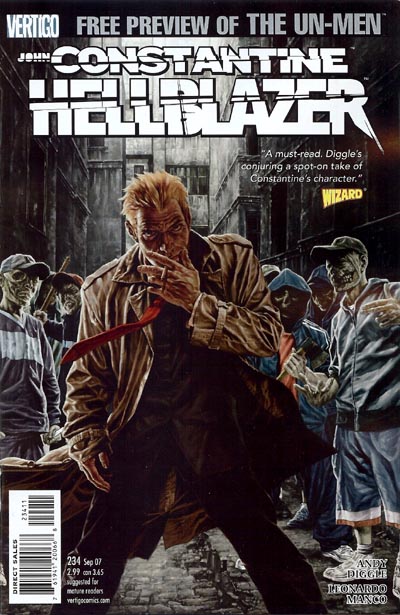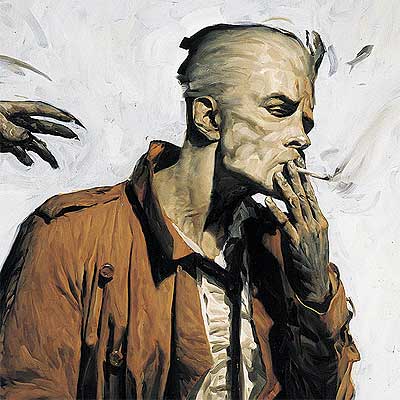 As I argued in my introduction to our coverage of the BBS box set, this major Criterion release both celebrates New Hollywood and complicates the master narrative informing the way in which the era is typically remembered. Alongside classics of the era like Easy Rider, Five Easy Piecesand The Last Picture Show, the set also includes films that were received badly or misunderstood in their time like Head and The King of Marvin Gardens which can now be reassessed with the benefit of hindsight. But perhaps the most interesting juxtaposition to the canonized works of New Hollywood here is the presence of the absolutely obscure, the completely forgotten, the movies that up until now were lost in time and memory.
As I argued in my introduction to our coverage of the BBS box set, this major Criterion release both celebrates New Hollywood and complicates the master narrative informing the way in which the era is typically remembered. Alongside classics of the era like Easy Rider, Five Easy Piecesand The Last Picture Show, the set also includes films that were received badly or misunderstood in their time like Head and The King of Marvin Gardens which can now be reassessed with the benefit of hindsight. But perhaps the most interesting juxtaposition to the canonized works of New Hollywood here is the presence of the absolutely obscure, the completely forgotten, the movies that up until now were lost in time and memory.This set marks the first time Jack Nicholson’s Drive, He Said (1970) and Henry Jaglom’s A Safe Place (1971) have been released in any home video format. These films are, in a sense, correlated with New Hollywood because of their themes, narratives, characters, and their temporal and economic contexts, but unlike the three heavy-hitters in this set, watching them now is, by comparison, to see a film with a forty-year-old blank slate – a unique and rare experience when one contrasts watching these films to, say, Easy Rider, a movie inseparable from an ongoing and reiterated forty-year-long conversation about what it meant then and means today.
Separately, these are interesting films on their own, but together, Drive, He Said and A Safe Place point to the fact that there’s still a great deal of New Hollywood history yet to be written, and fresh gems to be found.
Drive, He Said
One important aspect of the “BBS Story” itself is the regular company of talent that the production company employed who constantly shifted creative roles. Drive, He Said is Nicholson’s directorial debut, which co-stars Jaglom, and A Safe Place is Jaglom’s directorial debut, and co-stars Nicholson. The New Hollywood era is often thought of as the age of the self-conscious American auteur, the time where films were by and large deliberately manifested visions of the individual artist rather than the collective efforts inherent to the studio system. Individually, the BBS oeuvre doubtlessly consists of the work of artists, and the company enjoyed an unprecedented amount of studio-funded creative freedom in contrast to the constrictive former studio system, but when viewed together these films can hardly be argued as works of individual artists, but instead evidence the virtues of a collaborative creative community.
This aspect of the set becomes especially apparent in Nicholson’s film. If there is a face to the BBS production company, that face is Nicholson’s. With the exception of The Last Picture Show, Nicholson held an important creative role in each of the films in the set, both on and off-screen. The only one of the Nicholson-involved films in which his iconic visage is nowhere to be found is his first time stepping into the director’s chair to compose a story about a college basketball player’s firsthand experience of sexual liberation (in his affair with his professor’s wife), rebellion against controlling forces (in his rejection of the hegemonic oppression of the ‘team’), and exposure to militant student activism (the increasingly insane antics of his roommate).

It’s interesting that of all the subjects one could tackle during this socially and politically tumultuous and revolutionary era, the guy who wrote Roger Corman’s The Trip and co-starred in Easy Rider made a movie about the countercultural experience of a jock. Today, with his dense legacy, Nicholson is a force of nature whose personality seems almost literally larger than life, as if he can’t just be one human. He is the ultimate movie star, the individual who not only stands out from the crowd, but makes the crowd altogether invisible. And while Nicholson certainly had a star presence in the late 60s and early 70s that led him to his current persona, Drive, He Said represents a time when he was interested in being part of every aspect of the creative experience, and the film’s newfound availability allows for a reassessment of the supposed singularity of the movie star, and even an alternate Nicholson that could have been (it’s significant that, by contrast, Nicholson was also in front of the camera for his other two directing efforts, Goin’ South (1978) and The Two Jakes (1990)).
Drive, He Said is an admittedly weak film, and hasn’t aged well, but as a film about individuals struggling against the collective (the jock against his team, the lone counterrevolutionary against his perceived oppression), it speaks volumes to the paradigm-shifting roles of creative individuals in innovate communities at this time in Hollywood, and likewise the contradiction of the star or auteur amongst the collective which arguably brought an end to the era.
A Safe Place
Speaking of larger-than-life personalities, the presence of Orson Welles alludes many implications to the ways in which A Safe Place can be reevaluated as a Criterion ‘discovery.’ The film seems to speak directly to the Criterion Collection itself, as the elliptical editing approach to a story of a broken relationship resembles Nicolas Roeg’s Bad Timing (1980), and Welles’s ethereal, is-he-real-or-not magician character in this film more than slightly resembles his embodiment of the charlatan who would “narrate” Welles’s final completed film a brief year later in F for Fake (1972).
Welles’s generational disparity from the characters filling out this complex NYC love triangle between a free-spirited woman (Tuesday Weld, beautifully heartbreaking here as the only BBS female protagonist) who dates a charming square (Philip Proctor), but can’t seem to pull herself away from a flaky, dangerous former lover (Nicholson), is all-too-apparent. Welles’s psychedelic, possibly omnipotent magician could only exist outside this narrative of the counterculture in Gotham. He’s the cinematic bad boy of the previous generation working with the cinematic bad boys of the hippie age. Like members of the BBS community, Welles enjoyed every aspect of creative film production, but his career rose-and-fell tragically in part because of his insistent personality.

But Welles, as he demonstrated in nearly all his films as director and as he would later say bluntly in F for Fake, considered himself a cinematic magician, a manipulator who forces your perspective simultaneously for your own amusement as well as his benefit. The experience of magic is collective, but it’s dependant on the will of the individual. And this aspect of Welles’s own personality concisely sums up the drama that motivates A Safe Place. The film’s central couple experiences turmoil because of their disparate perspectives on the potential for magic and the power of the inexplicable in everyday life, which at the time merged countercultural sensibilities and New Age philosophy as depicted here.
When Weld asks for Proctor’s pseudo-astrological “number,” all he can think of is to tell her how to call his phone, and when Weld and her fellow hippie friends attempt to reach the spirits of beyond with an Ouija-like exercise, Proctor explains the psychological and physiological factors that make the cup move. Proctor, endearingly impressed and satisfied by reality itself, is essentially a buzzkill for his lover and her friends who want to believe in something beyond what we see and hear. And Jaglom doesn’t simply situate this countercultural need for magic recreationally, but as a deep need for escape, illustrated most powerfully with Gwen Welles’s verite-esque, fourth-wall-breaking confession of suicidal tendencies.
The countercultural cinema of New Hollywood, then, not only attempted to reflect social reality and new political sensibilities onscreen, but to provide exactly the “magic” they sought to experience (how else could one describe a movie like Head?). This aspect of A Safe Place is rooted in the tradition of the New York 1960s avant-garde, which was composed of filmmakers who believed cinema could induce a transcendent experience equal to or even greater than psychedelic drugs. This is why Flaming Creatures director Jack Smith’s famous impassioned assertion that “magic is real” should not be understood as a metaphor, but as a directive. But what A Safe Placesuggests so poignantly is that this magic is sought not so much to experience the otherwordly or to escape the oppressively mundane nature of reality, but, as the title suggests, to find something more reliable and comforting than reality. Magic in A Safe Place is everywhere, but it’s also tragically elusive











No comments:
Post a Comment